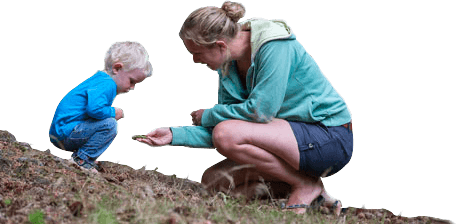Pigs
In September each year for a couple of months, the famous New Forest ponies, cattle and donkeys are joined by another group of animals – pigs.
Commoners let their pigs loose on the Forest to hoover up fallen acorns which are poisonous to ponies and cattle and can cause internal bleeding and death. The pigs also eat beech mast, crab apples and anything else they can find.
The exact dates are decided by the Verderers and Forestry England according to seasonal variations. For example, the ‘pannage’ season, as it is known, can start towards the end of September and extend to the end of December because of a glut of acorns.
Pannage is also known as ‘common of mast’, one of the common rights attached to various properties in and around the New Forest that allows commoners to graze their pigs on the Forest. Traditionally pannage enabled commoners to fatten their pigs for slaughter and salting in the winter.
In modern times between 200 and 600 pigs are turned out as the number owned by commoners has fallen. In the 19th century the number was as high as 6,000.
Commoners pay a token fee for each pig they turn out. Each pig is marked with an identity tag in its ear and has a ring put through its nose to reduce the damage to the Forest caused by rooting.
Thank you for keeping your distance from the pigs (don’t touch or feed them), and drive slowly through the Forest as they often wander onto roads. Autumn rain or fog, low sun and fading daylight can also hinder visibility, so please drive to the conditions at the time.


